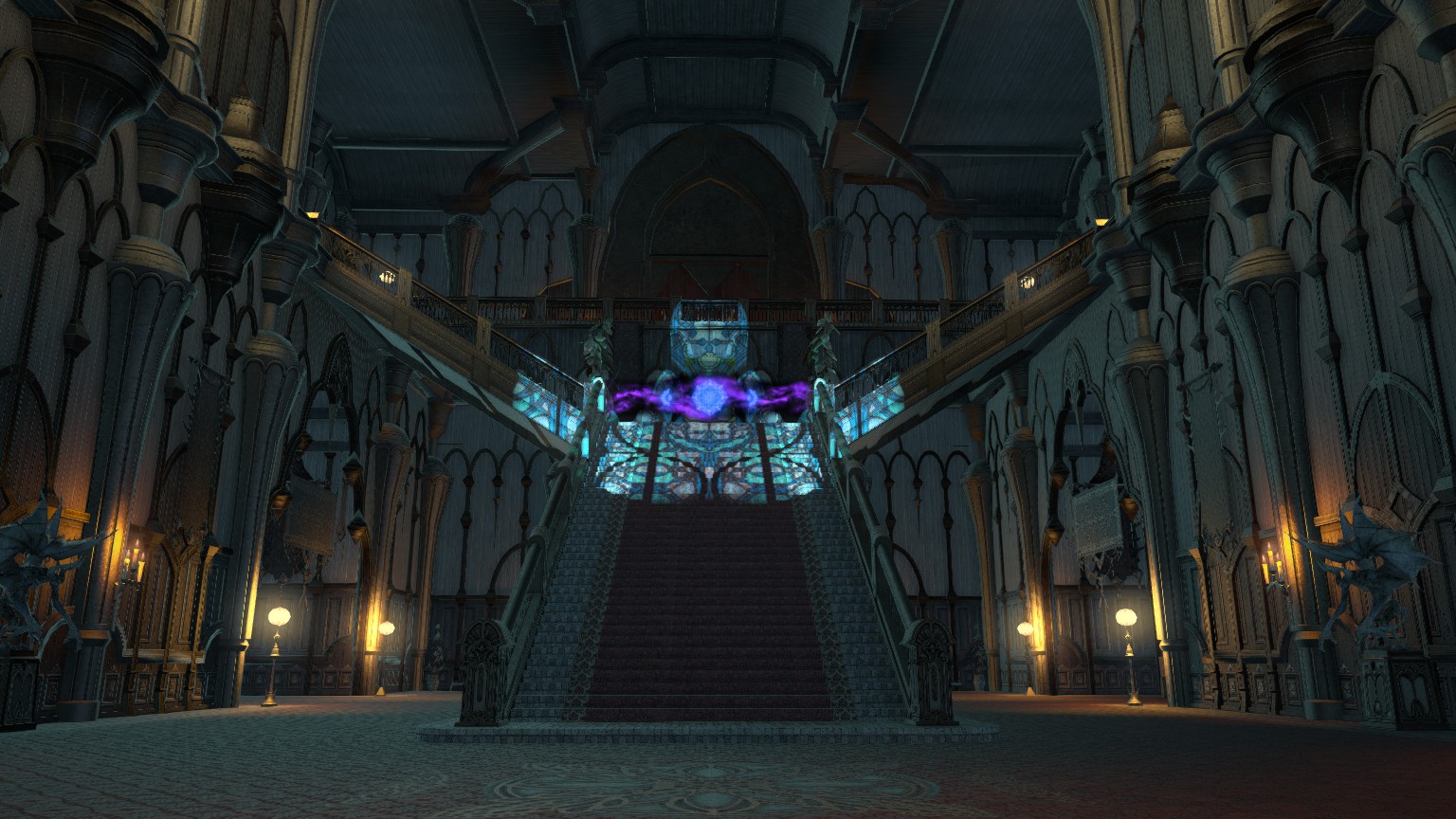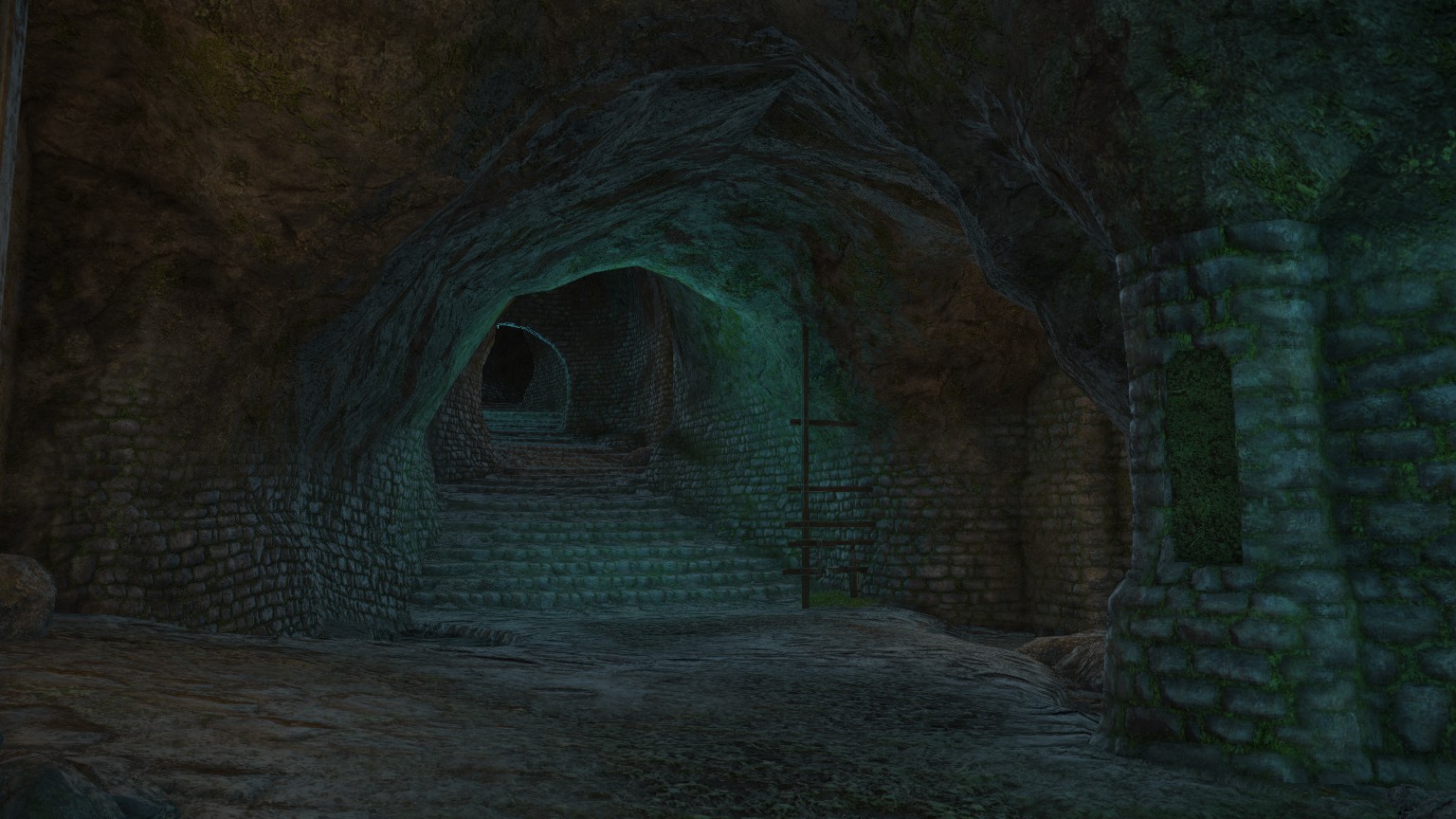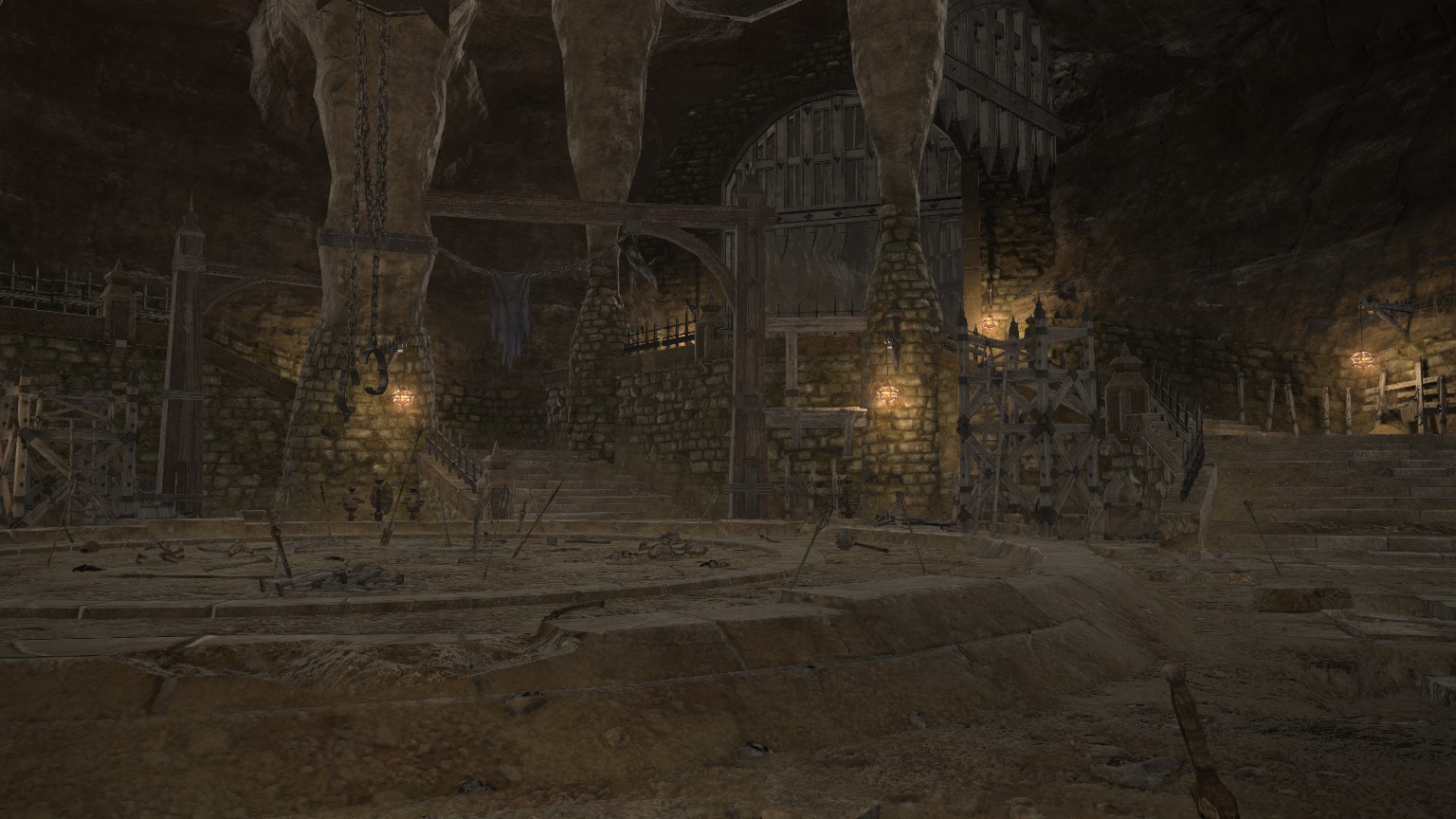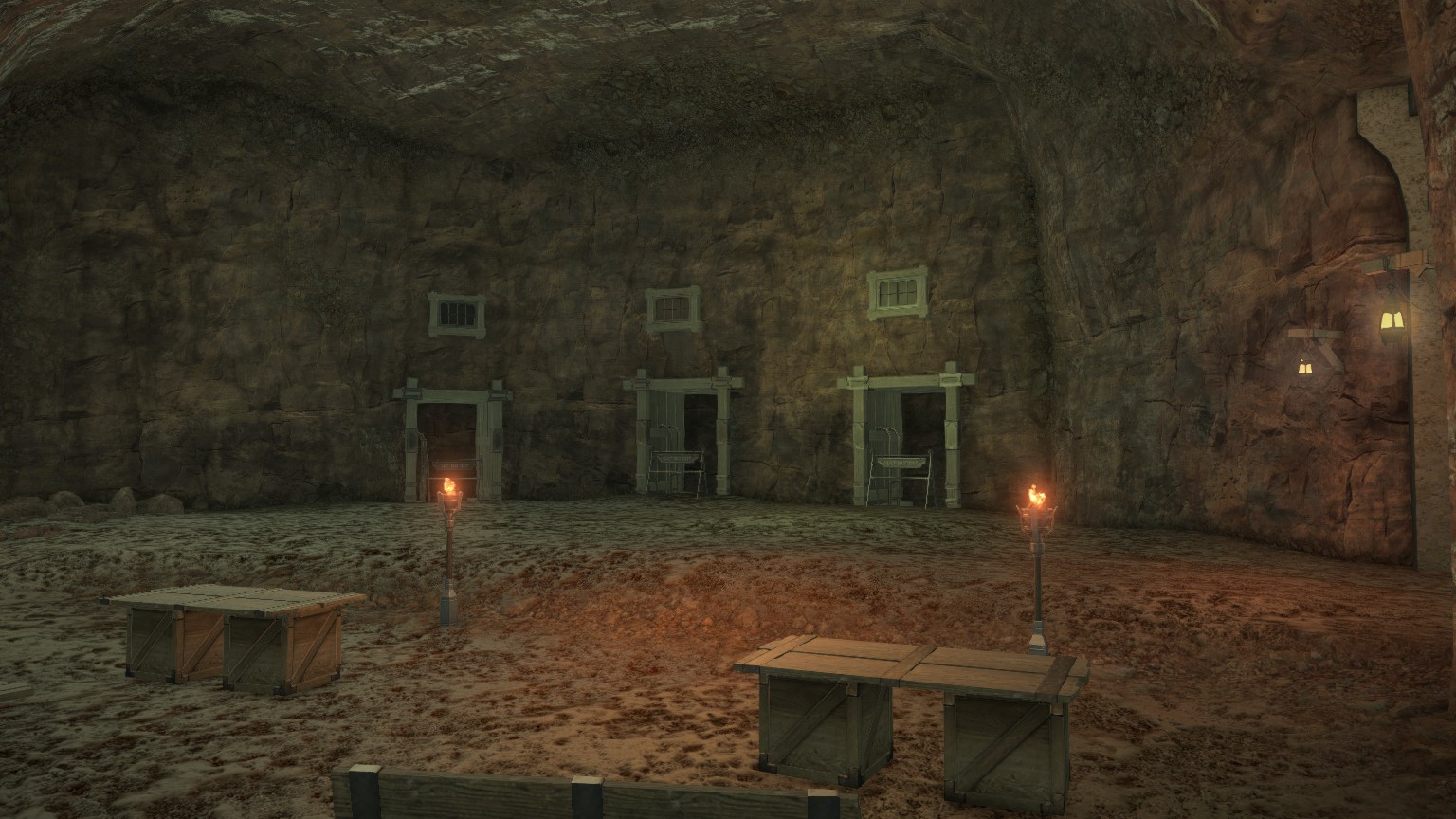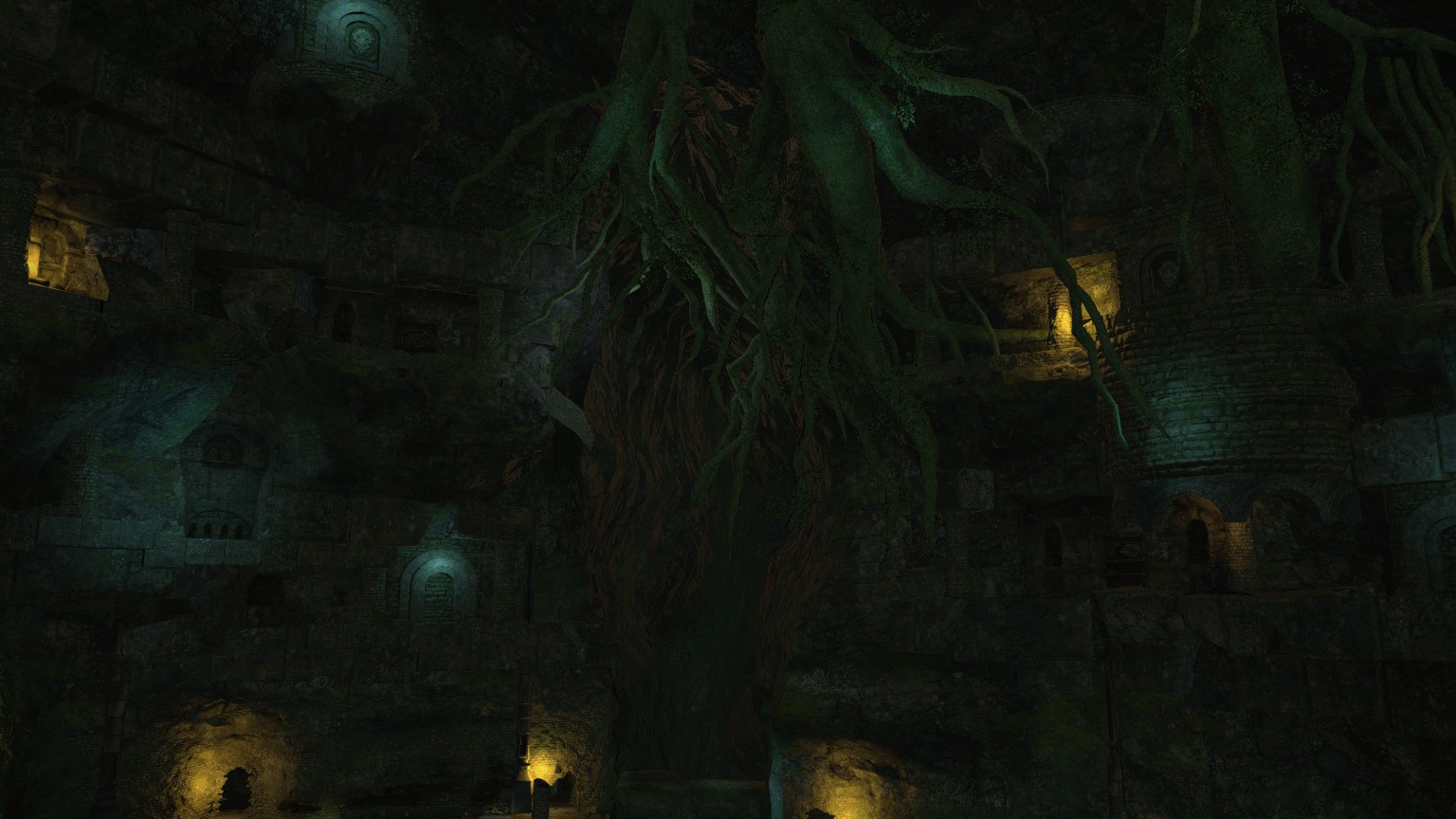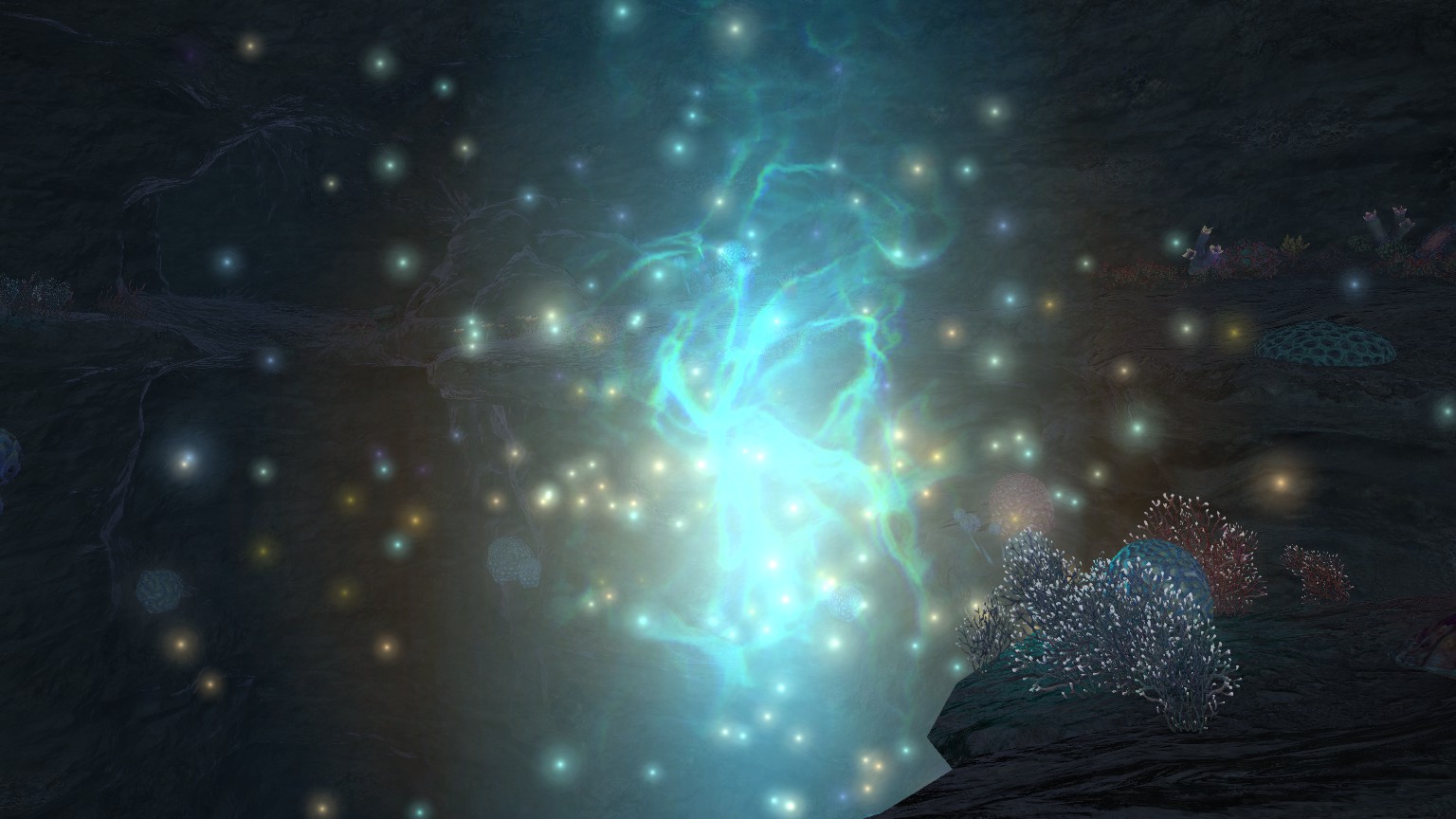Excerpt from ‘The history of the Black Shroud, from Amdapor to Gridania’ by Archon Niniri Niri. This will not be the first examination of Haukke Manor by a Sharlayan scholar, but whereas pre-calamity accounts were able to study it at first as a symbol of the Elder Seedseer's excess and prestige, then later as a symbol of the same for the Dartancours family, this author will be cataloguing the now fallen residence as a cautionary tale against consorting with dark powers. The manor had been the residence of the Elder Seedseer for generations, but increasingly incurred the wroth of a discontent populace for its opulence, resulting in the Elder Seedseer before Kan-E-Senna's predecessor selling the manor to the Dartancours, an ancient and … [Read more...]
The Thousand Maws of Toto-Rak – The Adder’s Gaol
Excerpt from ‘The history of the Black Shroud, from Amdapor to Gridania’ by Archon Niniri Niri. A complex of tunnels hidden deep beneath the South Shroud, the Thousand Maws are modified natural caves that were used as a prison for the most heinous criminals of Gridania. What exactly constituted the worst possible criminal is different in Gridania due to the influence of the elementals, with poachers and arsonists being imprisoned with the complex due to the existential threat their actions posed towards both the forest and Gridania itself. Thirty years ago the prison was deemed untenable due to the widespread mistreatment of its prisoners, and after construction of a jail closer to the city, it was abandoned. Toto-Rak has since become … [Read more...]
Halatali – Rusted Gore and Glory
Excerpt from ‘The history of Thanalan, from Belah’dia to Ul’dah' by Archon Niniri Niri. Halatali is a more ancient and revered site than the vast majority of those who attend fights facilitated by it on the Bloodsands would ever know. Piecing together what few records survive with folklore and archaeological evidence has revealed that Halatali was a system of naturally-occurring caves that were found by Lalafell who escaped the terror of the fall of Mhach. They settled here, naming it Halatali, which translates to 'the land of a thousand shadows' in honor of its role in protecting them from Thanalan's baleful sun, and would later go on to found Belah'dia. This status persisted until later in the life of Belah'dia's successor, … [Read more...]
The Copperbell Mines – Ul’dah’s Shame
Excerpt from ‘The history of Thanalan, from Belah'dia to Ul’dah by Archon Niniri Niri. It had long been claimed by the powers of Ul’dah that the abandonment of the copper mining operation commonly known as the Copperbell Mines three hundred years ago was due to the drying up of the veins within, and that the mines were off-limits due to monsters that had moved in after the abandonment. When the powerful Amajina & Sons Mineral Concern reclaimed the mines, however, using new mining techniques in an attempt to reach valuable veins too deep for the ancient mines to exploit they discovered the true end of the Copperbell Mines. The Thorne dynasty of Ul’dah, rulers in a two hundred year interregnum of the ‘Ul dynasty, were ardent … [Read more...]
The Tam-Tara Deepcroft – A Tomb of Kings
Excerpt from ‘The history of the Black Shroud, from Amdapor to Gridania’ by Archon Niniri Niri. The histories of Eorzea tell us that Gelmorra was born out of the terror of magic produced by the Sixth Umbral Calamity. In the wake of the colossal floods that characterized the Calamity the survivors turned on the arts of magic that had caused the disaster, putting both knowledge and practitioners to the flame. The elementals of the Twelveswood were enraged by the excess of Amdapor and its contemporaries, and the Hyur and Elezen of the Black Shroud, unable to commune with the elementals after abandoning magic, were driven underground, where they would later join hands and found the underground city of Gelmorra. Over the course of centuries … [Read more...]
Sastasha Seagrot – The Reaver’s Lair
Excerpt from ‘The history of Vylbrand, from Nym to Limsa Lominsa’ by Archon Niniri Niri. An extensive system of caverns on the western coast of Vylbrand, Sastasha was carved from the rock by eons of erosion. The cave’s initial inhabitants were the sahagin, an aquatic race of spoken hailing from the depths of the Indigo Deep. Common knowledge amongst the people of Western La Noscea dictates that the sahagin used the cove as a meeting place, and that the name ‘Sastasha’ derives from this, meaning ‘many shells’ in their native language. The cove is sometimes referred to by a longer name, Sastasha Seagrot, and Seagrot is likely a portmanteau of sea and grotto, with a grotto being a partially submerged cave system. Roughly … [Read more...]



